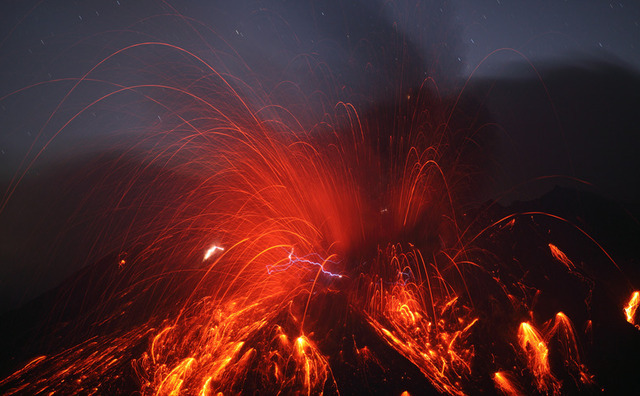
The early Earth would be inhospitable to any time-traveling animal for a number of reasons, not least of which would be the harsh, alien atmosphere. Without any oxygen, respiration is out of the question, and the subsequent lack of an ozone layer would allow dangerously high levels of UV radiation from the Sun to reach the surface. Fortunately for us, oxygen began to build up in the atmosphere about 2.5 billion years ago, during what is referred to as the Great Oxygenation Event. We’ve long understood this to be tied to the onset of photosynthesis performed by cyanobacteria (“blue-green algae” in the vernacular), a process that liberates oxygen. But photosynthesis doesn’t tell the whole story—there seem to be other factors in play.
Geochemists have long puzzled over the possibilities. Knowing that photosynthesis predated the Great Oxygenation Event by some amount, research has focused on potential buffers that could have locked up oxygen and prevented it from accumulating in the atmosphere. Several mineral reactions have been identified as plausible culprits, but measurements of sulfur isotopes have provided some of the most tantalizing evidence.
Sulfur isotopes record what may be a major shift in the ratio of SO2 to H2S in volcanic gas around the time of the Great Oxygenation Event. This is not an effect of the presence of atmospheric oxygen—the chemistry suggests that it’s a change in the volcanic emissions themselves. This is another head-scratcher, because there’s no evidence for a change in the lava that erupted from these volcanoes. In other words, the composition of the magma didn’t change, but the gas that was released did.
As it happens, another noteworthy event in Earth history took place around the same time. A large portion of continental crust formed rapidly while global ocean volume was decreasing. As a result, the area of crust exposed to the atmosphere increased quite a bit over a (geologically) short period of time. A paper published this week in Nature bolsters an argument that was proposed several years ago—that the sulfur emissions changed simply because volcanoes were increasingly exposed to the atmosphere.
The new work uses chemical models to show that the ratio of SO2 to H2S in volcanic gas depends primarily on the pressure of the fluid above the volcano. A volcano beneath the surface of the ocean will produce much more H2S than an identical volcano on land. This means that, as more volcanoes found themselves up on dry land, the emission of H2S dropped significantly.
This is important because H2S readily reacts with oxygen, scavenging it from the atmosphere. With much lower concentrations of H2S in the atmosphere, the oxygen produced by photosynthesis could finally begin to accumulate.
This hypothesis is still in the exploration stage, and there’s room for debate. The timeline of continental crust exposure is too vague for the correlation to be a home run. The idea does offer a tempting explanation for several major pieces of evidence, though, so it will continue to attract the attention of the research community.
Nature, 2011. DOI: 10.1038/nature10460 (About DOIs).
Listing image by Photograph by NASA
reader comments
20